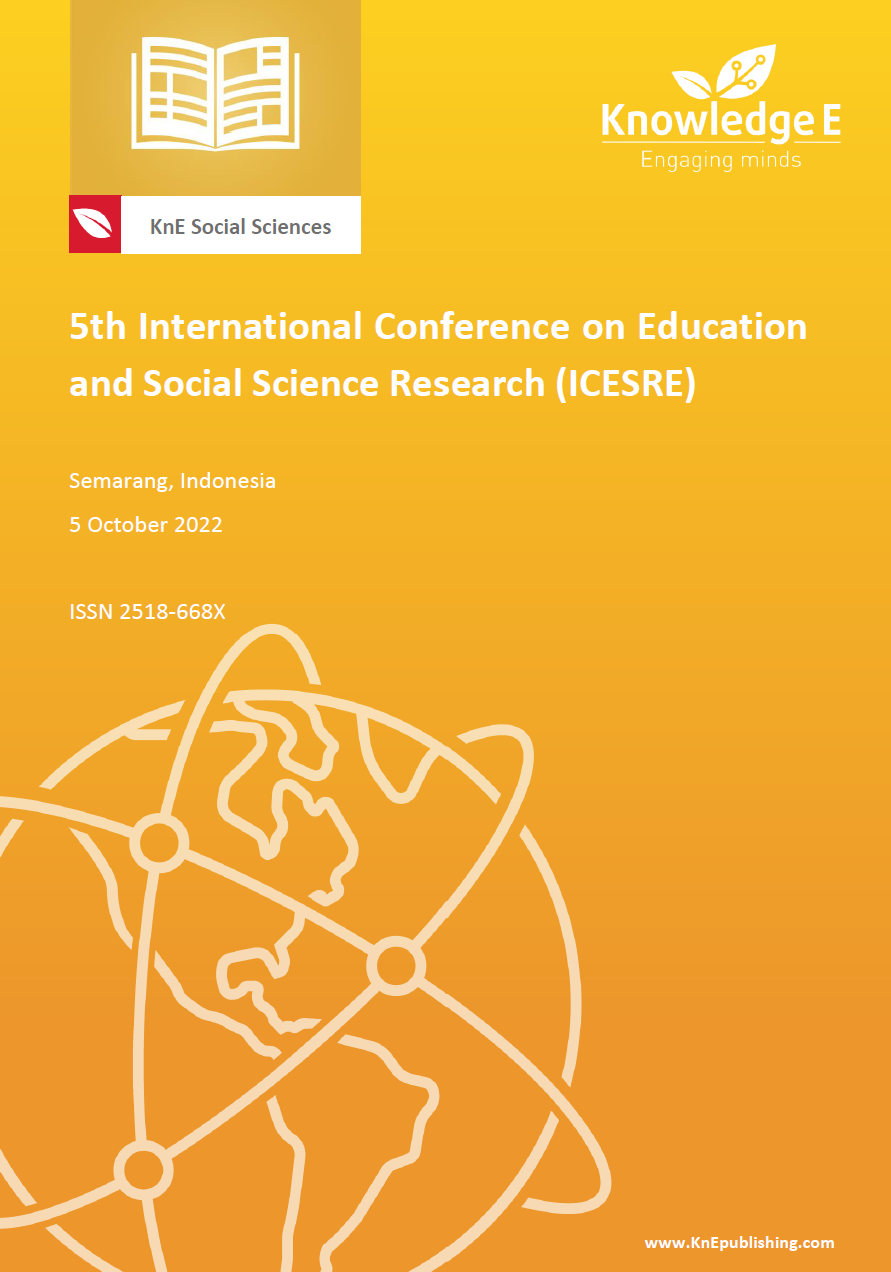Challenges And Expectation For Implementation Of Technical And Vocational Education Training (TVET) In Malaysian Prison Institutions: A Preliminary Study
DOI:
https://doi.org/10.18502/kss.v7i19.12494Abstract
The Malaysian Prison Department offers rehabilitation programmes for inmates that include guidance and counselling, disciplinary, religious and moral education, vocational and skills training and pre-release programs before they return to society as law-abiding citizens, and the success of this program is based on the recidivism rate. Implementation of Technical dan Vocational Education Training (TVET) in the Human Development Program (PPI) depends on the professional development of the instructor and must be in line with the national level requirement. Prison vocational instructors need to possess different teaching competencies due to their unique environment. This study aimed to identify and provide a new approach for training vocational teachers according to the needs of different stakeholders such as instructors, trainers (inmates) and related parties involved in TVET training. This study used a qualitative approach to collect the data. It used a semi-structured interview strategy with the educational experts in TVET, including training module developers, teaching experts, national industrial experts, prison senior officers, NDTS coaches, NDTS trainers and NDTS coordinators. The interview was to develop in-depth knowledge to enhance the data on the important domains of teaching competencies by thematic analysis. Analysis using NVivo, this study identified five core teaching competencies challenges faced by vocational instructors in prison: planning and preparation competencies, classroom preparation competencies, carrying out professional responsibilities’ competencies; instruction competencies; and assessment competencies. This study can be useful to Prison Vocational Instructors, Prison Management and also Prison Institutions that pursue accreditation on TVET teaching and learning.
Keywords: Teaching Competency; Education; Prison; TVET
References
Petersilia J, Reitz KR, editors. The Oxford handbook of sentencing and corrections. Oxford, UK: OUP; 2012. The Oxford handbook of sentencing and corrections.
Afzamiman Aripin M, Hamzah R. Developing highly skill human resource in prison: Holistic characters of vocational instructors in a unique environment 1*. International Journal of Pure and Applied Mathematics. 2018;119:617–626.
Arifin MA, Rasdi RM, Anuar MAM, Omar MK. Addressing competency gaps for vocational instructor through competency modelling. International Journal of Academic Research in Business and Social Sciences. 2017;7.
Boyatzis RE. Competencies in the 21st century. Journal of Management Development. 2008;27:5–12.
Danielson C. Enhancing professional practice: A framework for teaching. 2nd ed. Adolescence. 2007;42.
Hashim H, Chow Jen T’Ciang NZ, Rajamanickam R. Program pemulihan di dalam penjara bagi pesalah jenayah: Kajian di jabatan penjara Malaysia (Prison rehabilitation programme for criminal offenders: A study in Malaysian prison department). Jurnal Undang-Undang Dan Masyarakat, Isu Khas. 2018:72–85.
Hasmori AA, Md Yunos J, Hamzah R, Jalani N. Pelaksanaan Sistem Latihan Dual Nasional (SLDN) di kolej vokasional wilayah selatan; Satu kajian awal. First Technical and Vocational Education International Seminar 2014. 2014:1–8.
Hawley J, Murphey I, Souto-Otero M. Prison education and training in Europe. European Commission; 2013.
Samad I. Pengaruh faktor diri, keluarga dan persekitaran sosial terhadap residivisme di penjara. 2013:1–166.
Sidi ZM. Model pentaksiran kompetensi holistik dalam pengajaran Pendidikan Latihan Teknikal Dan Vokasional (PLTV). 2018.
Ismail K, Mohd Nopiah Z, Mohd Sattar R. Challenges faced by vocational teachers in public skills training institutions: A reality in Malaysia. Journal of Technical Education and Training. 2018;10:13–27.
Malaysia JP. Sejarah penjara. Malaysia: Jabatan Penjara Malaysia; 2020. Available from: http://www.prison.gov.my/ms/profil-kami/sejarah-penjara
Mohammed H, Mohamed WAW. Reducing recidivism rates through vocational education and training. Procedia - Social and Behavioral Sciences. 2015;204:272– 276.
Omar MK, Ismail K, Abdullah A, Pyng HS. (2021). The development of engineering TVET instructor standard teaching competency framework for vocational college. 2021;15:205–227.
Suhaizak AW. An introduction to treatment and rehabilitation for illicit drug use offenders in Malaysian prisons. 170th International Training Course Participantsʼ and Observersʼ Papers Issue. 2018;40–47.

